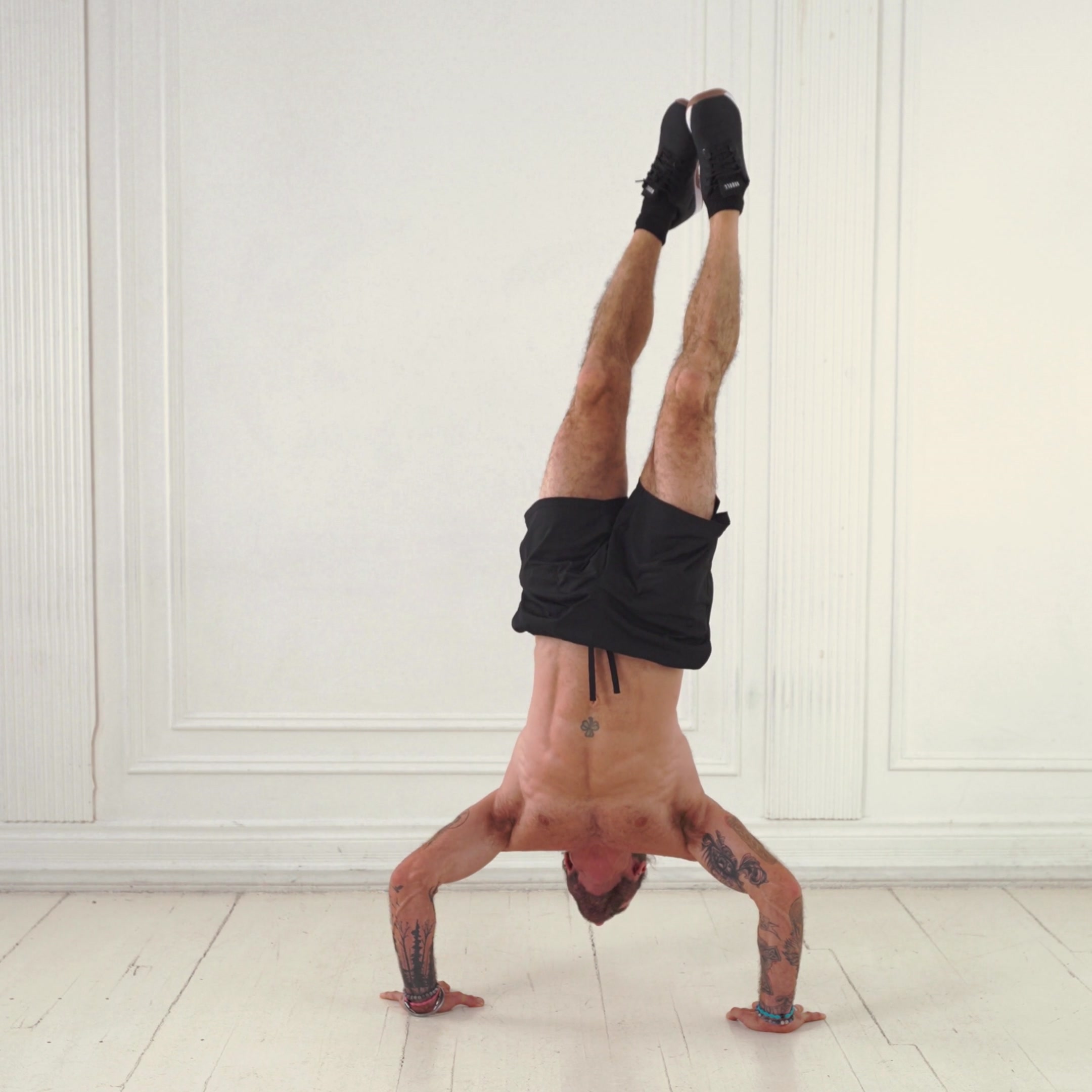Handstand
A bodyweight inverted balance hold targeting shoulders, core, and triceps to build full-body strength, stability, and coordination; often scaled with wall support for beginners.
About Exercise
Equipment
Difficulty
5/5 • Intermediate
Primary Muscle Groups
Shoulders, Triceps, Traps
Secondary Muscles
Forearms, Chest, Glutes
Popularity Score
5
Goals
Training Style
Setup Requirements
Requires Rack
No
Requires Bench
No
Requires Spotter
No
Space Needed
Small
Noise Level
Low
Muscle Breakdown
View Muscle MapShoulders
10/10Anterior Delts
Triceps
9/10Long Head, Lateral Head
Traps
8/10Upper Traps
Abs
7/10Rectus Abdominis, Transverse Abdominis
Obliques
7/10External Obliques
Lower Back
7/10Erector Spinae
Lats
6/10Forearms
5/10Flexors
Chest
4/10Glutes
3/10Programming
Typical Rep Range
1-30 reps
Rest Between Sets
60-120 seconds • Recover fully between holds
How to Perform
Place hands shoulder-width apart on a firm floor, facing away from a wall if using support. Kick legs up to form an inverted vertical line with body straight.
- Spread fingers and grip the ground firmly.
- Kick one leg up followed by the other to vertical.
- Align wrists, shoulders, hips, and ankles in a straight line.
- Engage core to hollow body and prevent arching.
- Push actively through shoulders toward ears.
- Adjust balance by pressing fingertips or heels of hands.
- Maintain steady gaze between hands.
Coaching Tips
Form Cues
- Push shoulders up
- Hollow your core
- Grip the floor
- Eyes between hands
- Lock elbows
- Squeeze glutes
Breathing
Inhale deeply to brace core, then exhale steadily while holding; avoid breath-holding to stay stable.
Tempo
0-5-0
Range of Motion
Fully invert body with arms locked straight, legs together and pointed to ceiling; maintain straight line from hands to toes without arching lower back.
Safety
Safety Notes
- Warm up wrists and shoulders thoroughly
- Use wall or mats for beginners
- Practice in clear space
- Stop if wrist or neck pain occurs
- Consult doctor for high blood pressure or injuries
- Learn safe bails like cartwheel exit
Spotting
Not typically spotted; use wall for support or have spotter nearby to assist controlled dismount; avoid free falls without mats.
Common Mistakes
- Arching lower back
- Bending elbows
- Tucking or hyperextending neck
- Flared ribs
- Loose legs
- Over-relying on wall
When to Avoid
- Acute shoulder impingement
- Neck injuries
- High blood pressure
- Wrist instability
Flexibility Needed
- Wrist extension to 90 degrees
- Shoulder flexion to 180 degrees
- Ankle dorsiflexion for alignment
Build Up First
- Proficient plank hold
- 10+ push-ups
- Basic crow pose balance
Also known as
Freestanding Handstand, Wall Handstand, Inverted Hand Balance
Found this helpful?
Share your thoughts or help us improve this guide.
Similar Exercises

Handstand Push-Up
Bodyweight
Shoulders

Single Dumbbell Overhead Tricep Extension

Dumbbells
Triceps

Smith Machine Behind Back Shrug
Smith Machine, Plates
Traps

Smith Machine Shoulder Press
Smith Machine, Incline Bench
Shoulders

Smith Machine Single-Arm Upright Row
Smith Machine
Shoulders

Stability Ball Cobra
Stability Ball
Traps
Stability Ball Kneeling Dumbbell Triceps Extensions
Stability Ball, Dumbbells
Triceps

Stability Ball Pike Push-Up
Stability Ball
Shoulders

Stability Ball Seated Dumbbell Shoulder Press
Dumbbells, Stability Ball
Shoulders

Sun Salutation
Bodyweight
Abs, Shoulders


subscribe to our newsletter
Contact Us
hello@trainfitness.aiFind Us
130 Spadina Avenue, Toronto,
Ontario, M5V 0H4, Canada
©2025 All Rights Reserved
